2017 |
Data Items: A Fashion Landscape at MoMA
Dataviz, Consulting, Guidelines, and Branding
The Museum of Modern Art's 2017 exhibition Items: Is Fashion Modern? took an analytical look at 111 modern objects of apparel from around the globe. The Department of Architecture & Design commissioned Accurat to build a large–scale, data–driven installation for the closing piece of the blockbuster exhibition.
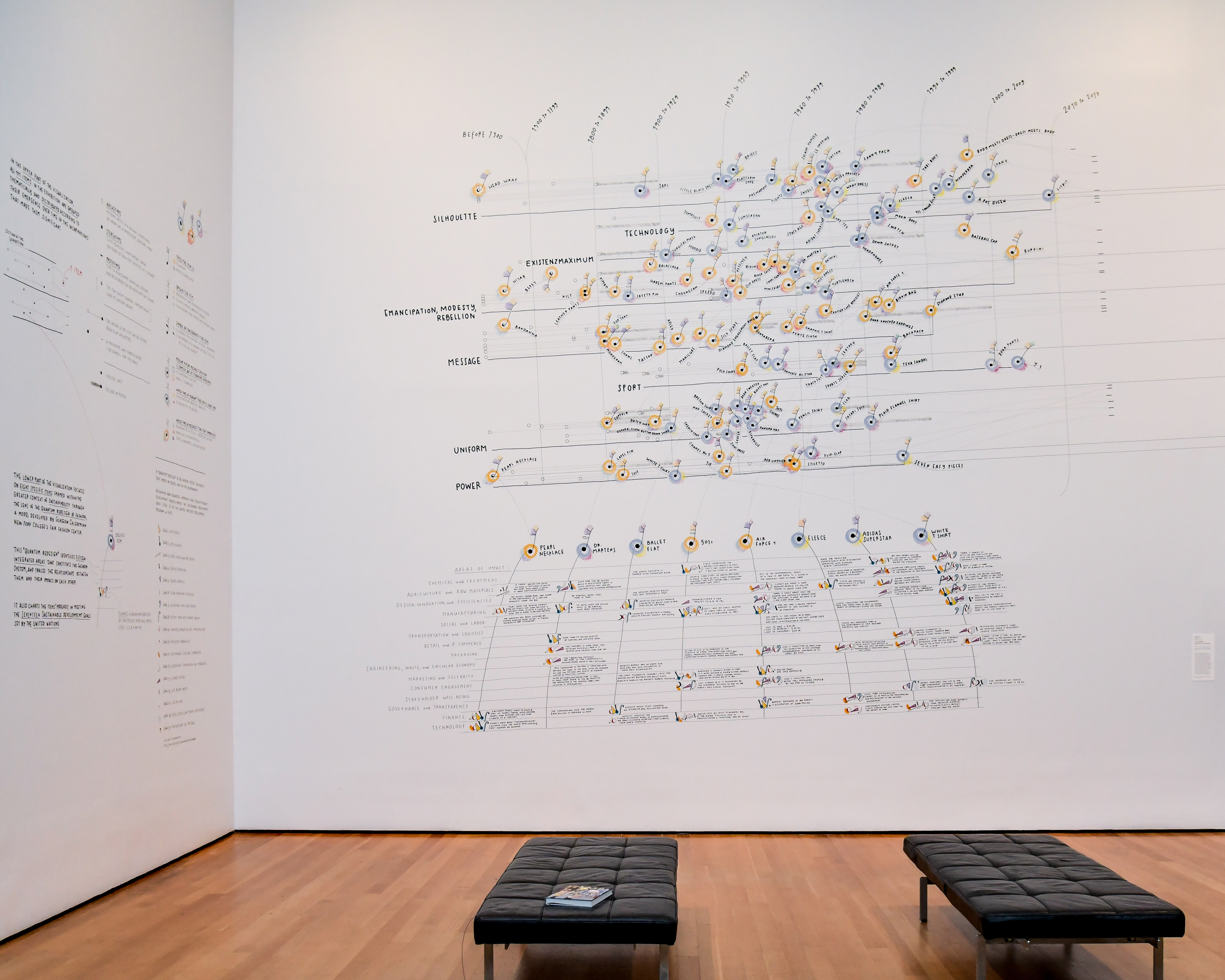
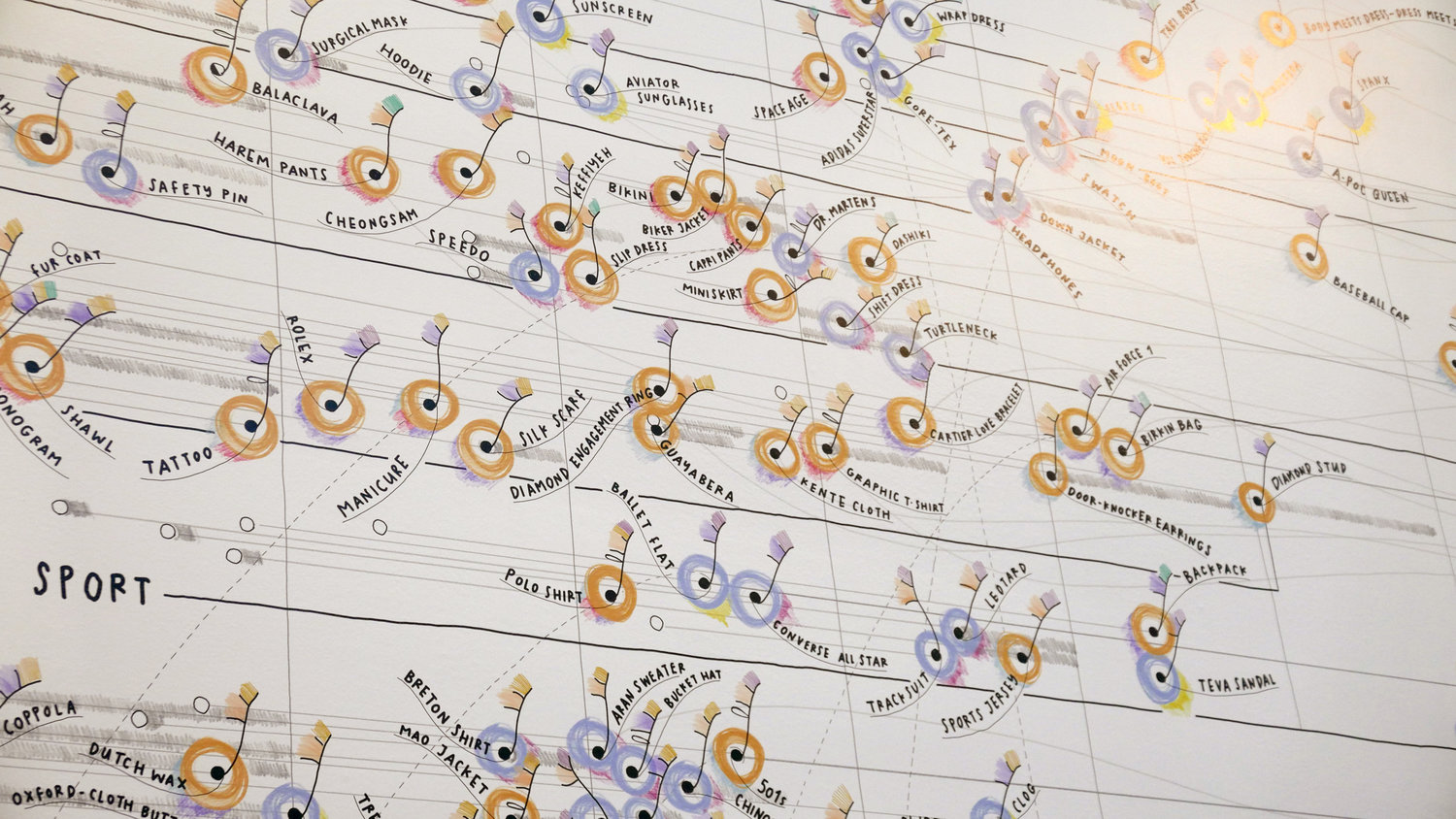
Brief
Curators Paola Antonelli and Michelle Millar Fisher sought to explore the myriad forces—“fashion and functionality, culture, aesthetics, politics, labor, identity, economy, and technology”—that led to each sartorial item's iconic status. In creating a data-driven artwork inspired by the exhibition, our first task—and chief challenge—was to identify data in a collection of objects ranging from surgical masks to Birkin Bags; Fitbits to saris. How could we begin to see keffiyahs, blue jeans, and diamond rings as data points?

Process
Using exhibition research as a starting point, we began our work with a deep–dive survey to familiarize ourselves with both the objects in Items as well as the vision of curators. We discerned some key themes: each piece seemed representative of the ways in which fashion can signal camaraderie with a given culture; each signified the ways in which sartorial choices can influence the ways that people live their lives. From these conclusions, we came up with a set of charged questions that could yield yes/no, either/or answers. For example:
- Was it selected for innovative design or production features, or because it made an artistic statement?
- Did it spark social change, or was it the product of a specific moment in cultural history?
- Was it worn to conform or rebel?- Why was it considered modern?
The final step was to visualize the findings of our investigation in a mural: a format worlds apart from the spreadsheets that data is usually associated with.
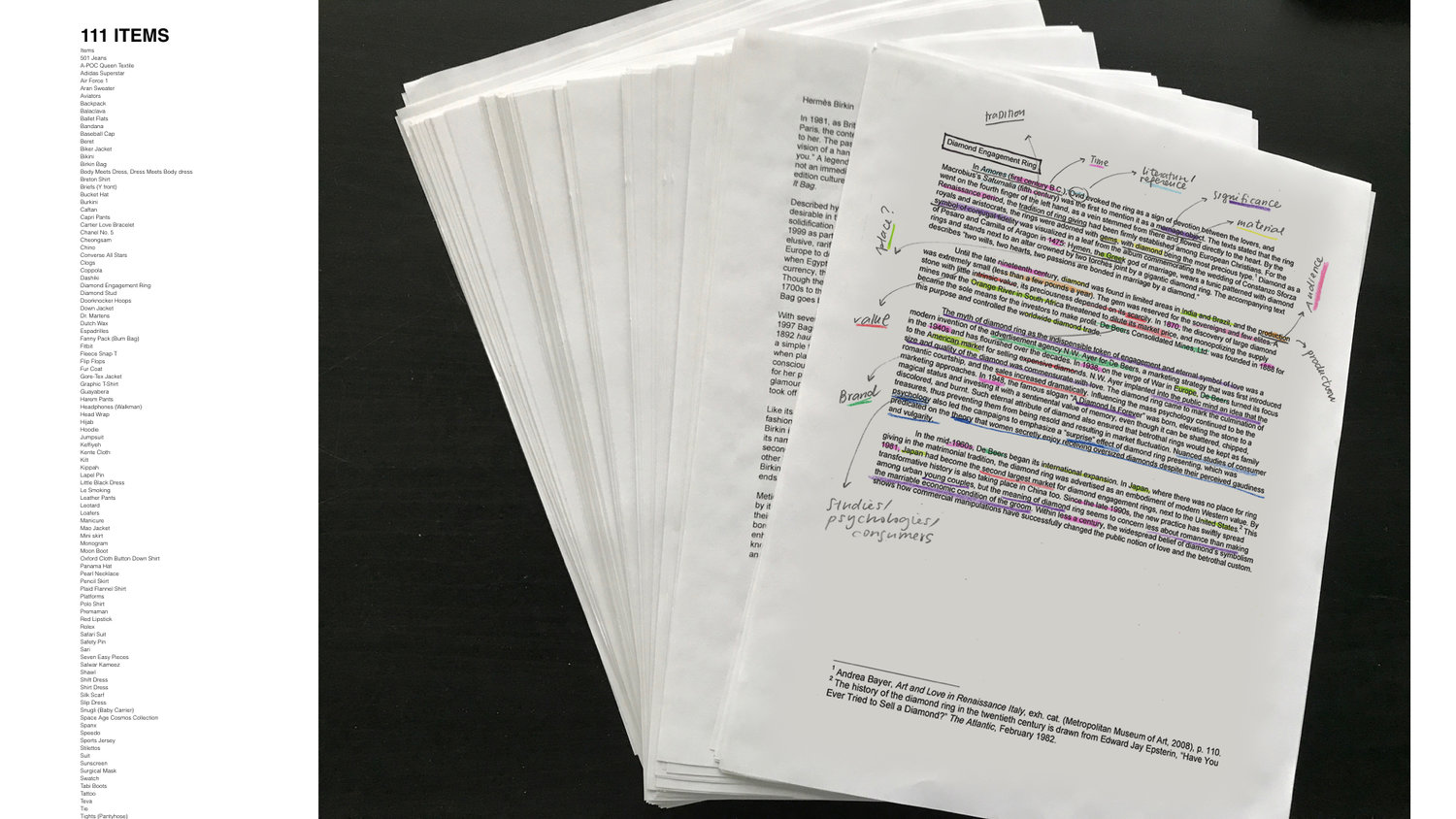
Our process involved combing through hundreds of pages of curatorial documentation.
Solution
The finished work dominates three 20–foot walls on MoMA’s sixth floor. Data Items: A Fashion Landscape, comprises two grids hand–drawn by Accurat partner Giorgia Lupi. Both position the exhibition's 111 items according to thorough systems of classification bred from our research.
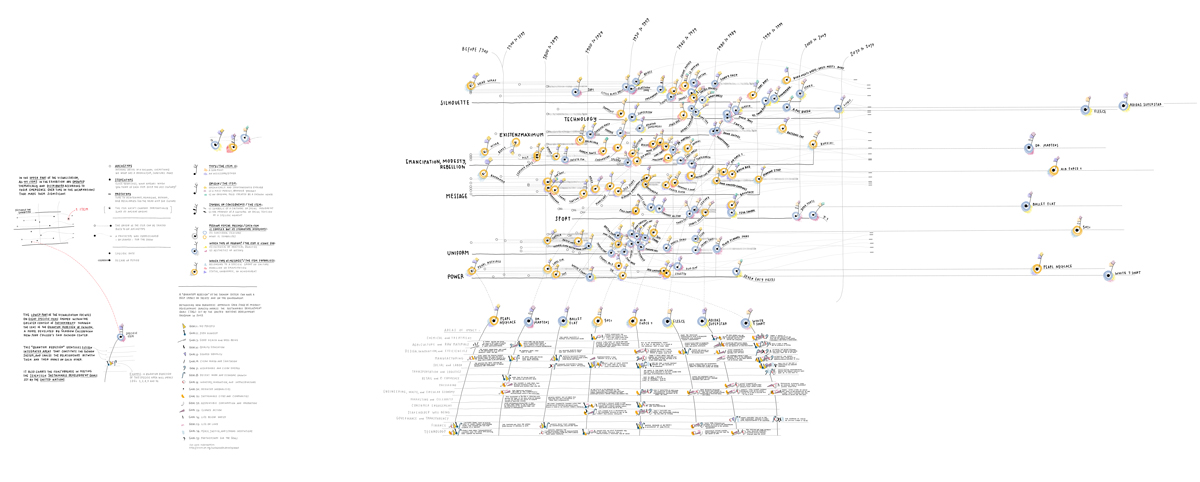
Full view: Data Items: A Fashion Landscape.
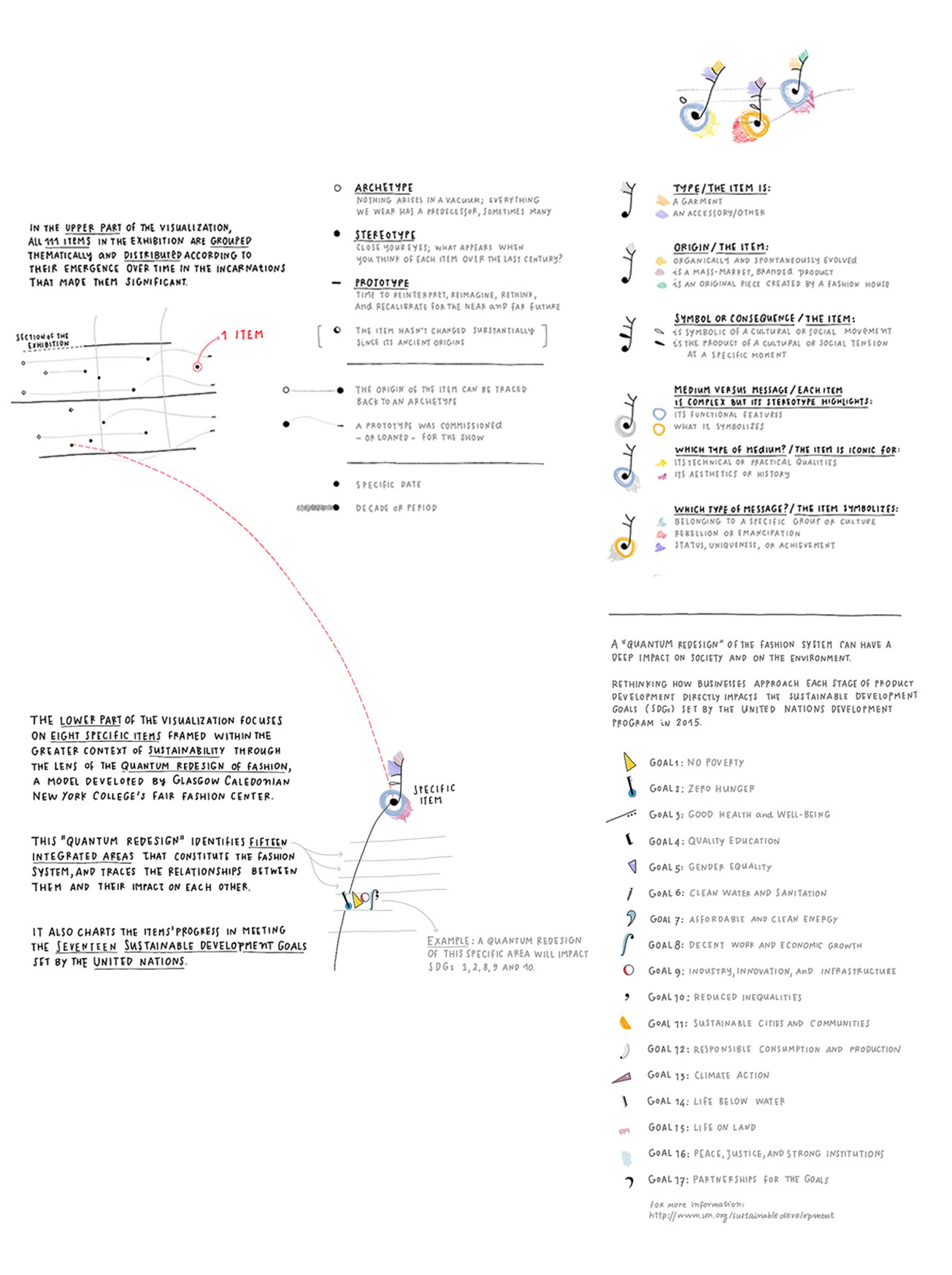
A key to reading the artwork's two main views.
In the first layer—the Landscape—we provided an overview of each Item and the exhibition. Objects are situated on the grid according to the time period of their emergence (the Y–axis) and their section in the exhibition (X–axis). Each data point is further demarcated according to characteristics such as whether it's a garment or accessory, or, at the other end of the subjectivity spectrum, what type of message it sends. For example: the color of shading at a data point's base symbolizes a) belonging to a group or culture b) rebellion or emancipation or c) status, uniqueness, or achievement.
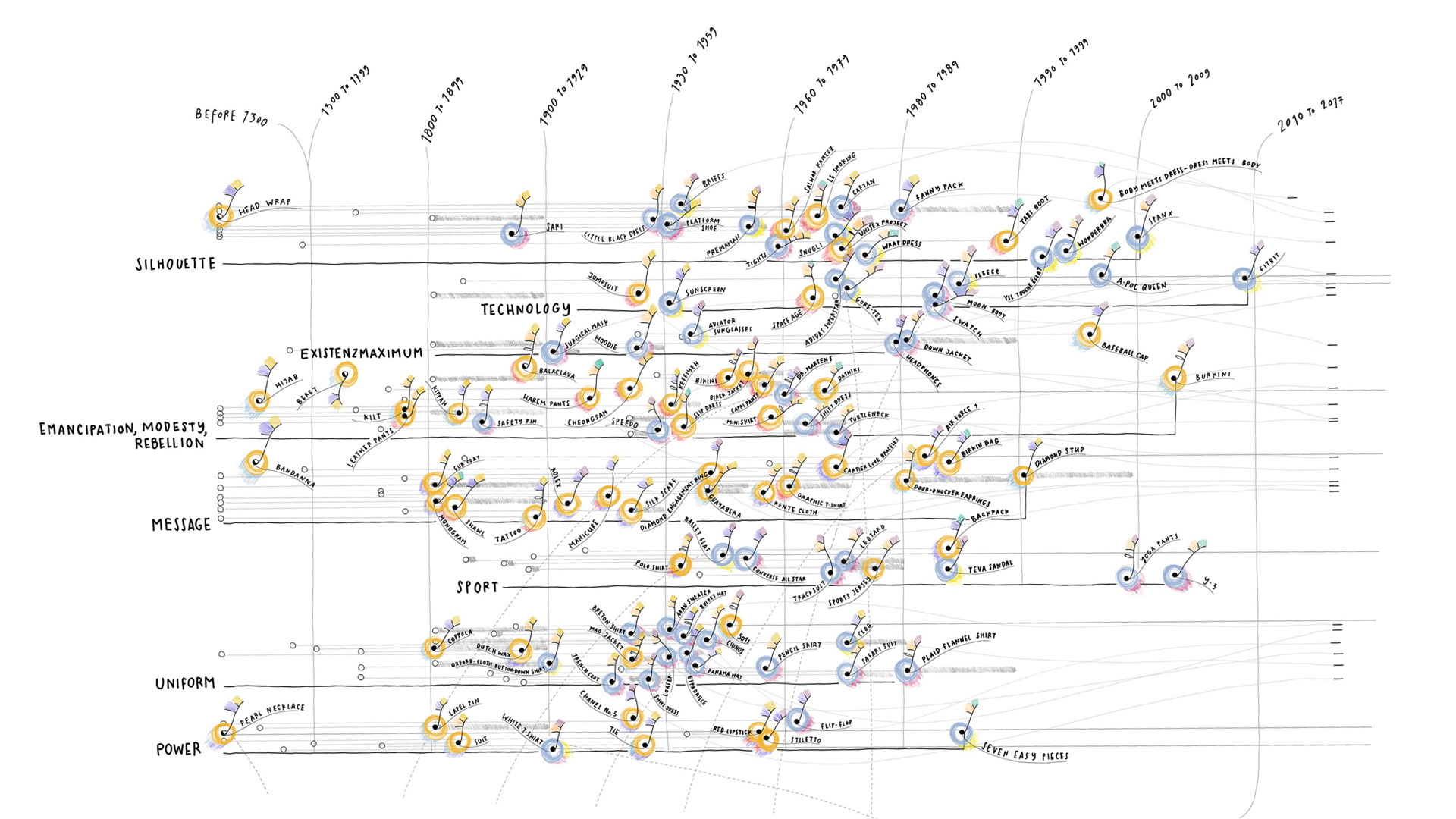
Detail: The Landscape portion.
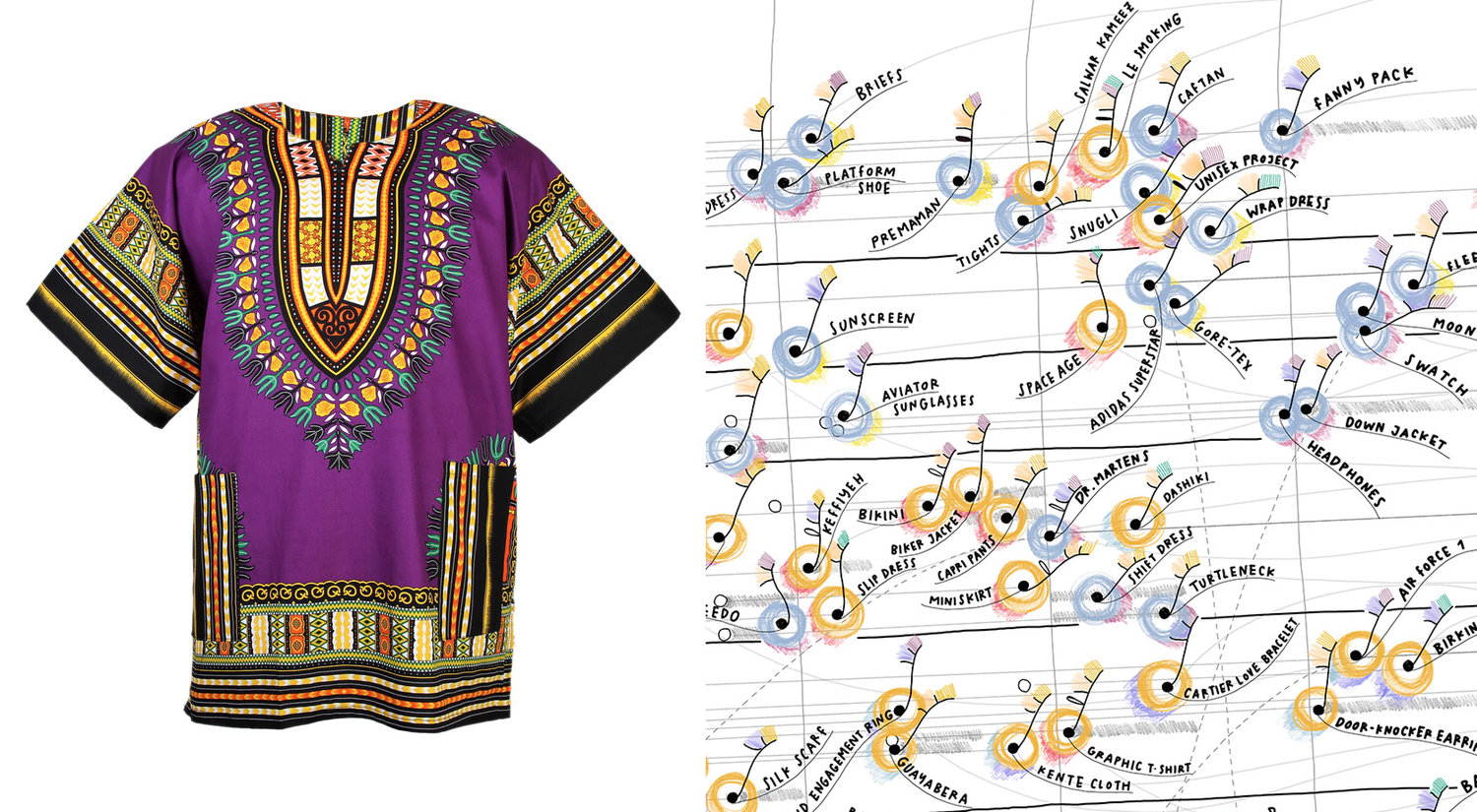
Left: A dashiki is not a traditional West African garment. In fact, it's the product of “New Breed Clothing:” a Harlem–based collective active during the Civil Rights era. Right: On our graphic, the dashiki's placement (between Dr. Martens and the shift dress) and appearance indicate that it emerged in the 1960s, that it's the product of a fashion house, and that it signals kinship with a particular culture.
The second layer, situated under the first, homes in on the commercial lifecycle of eight Capstone objects, using the “Quantum Redesign of Fashion” framework developed by Glasgow Caledonian New York College’s Fair Fashion Center. This model identifies 15 areas for intervention in the fashion industry and ties them to Sustainable Development Goals (SDG) set forth by the United Nations in 2015. Our dataviz uses original symbology to denote each of the SDGs, and places them according to where they'll have the biggest impact in disrupting current systems.
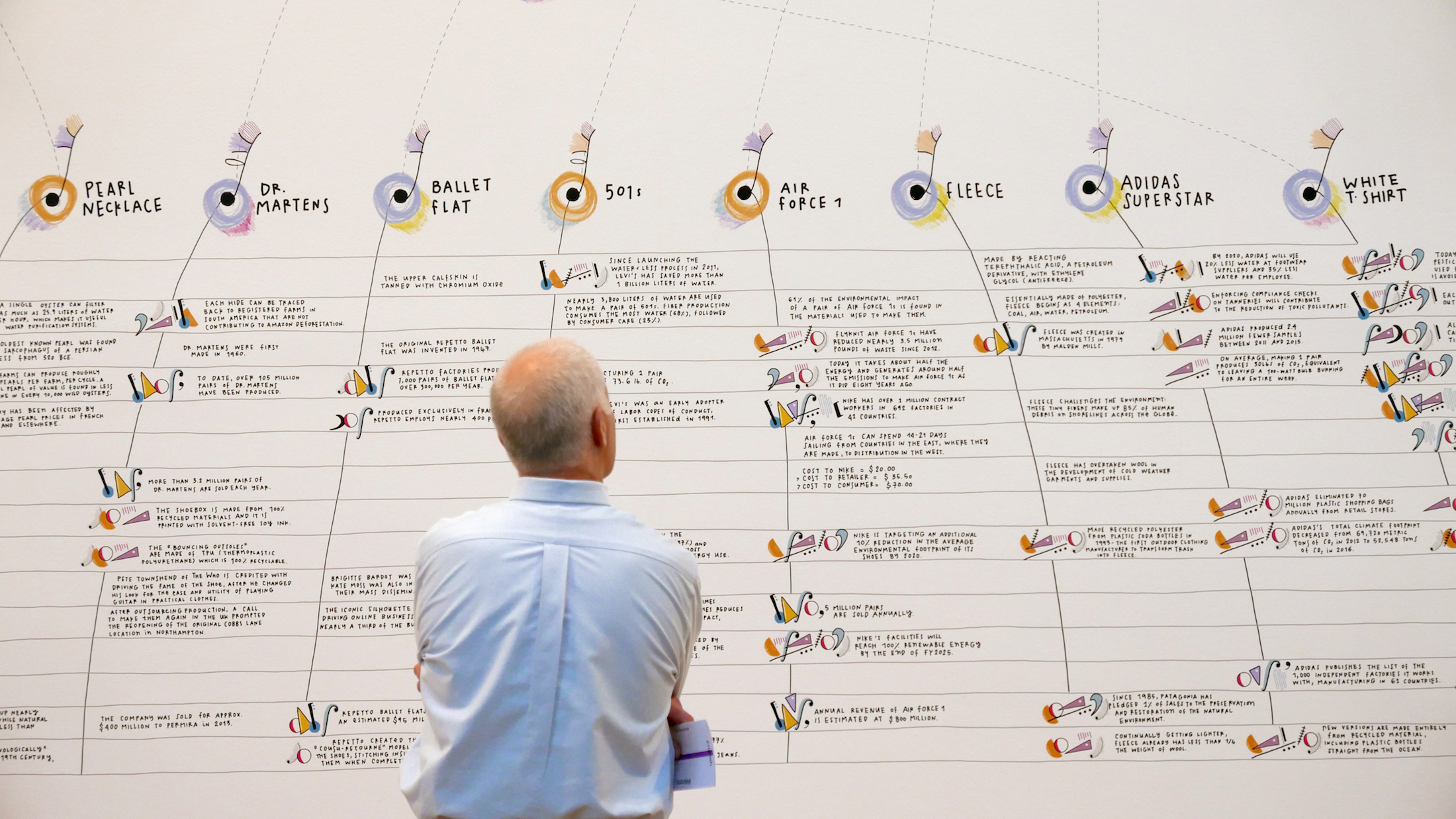
A visitor takes in the Capstone layer of work.
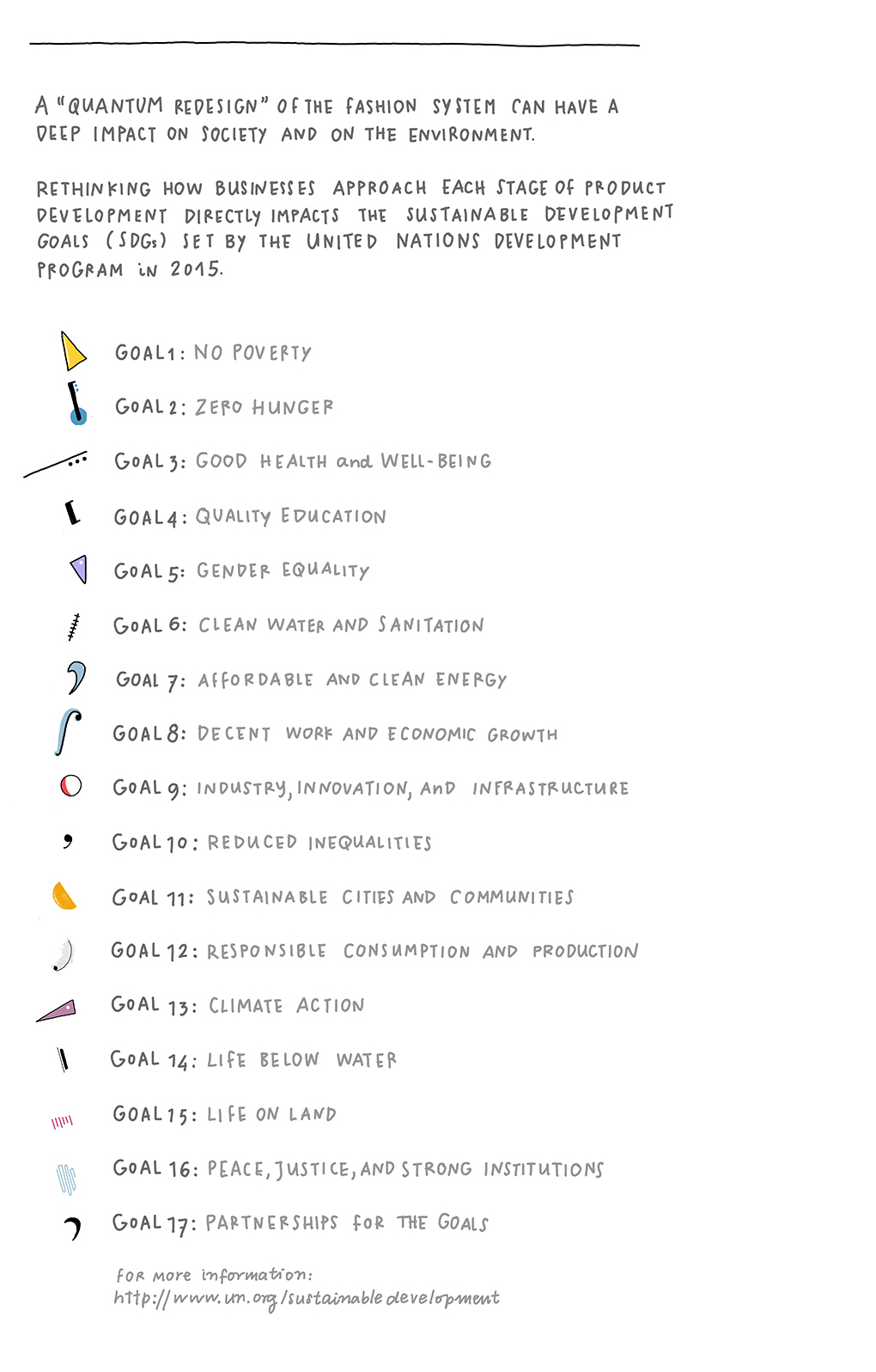
Each of the U.N.'s 2015 Sustainable Development Goals (SDGs) are given a unique symbol.
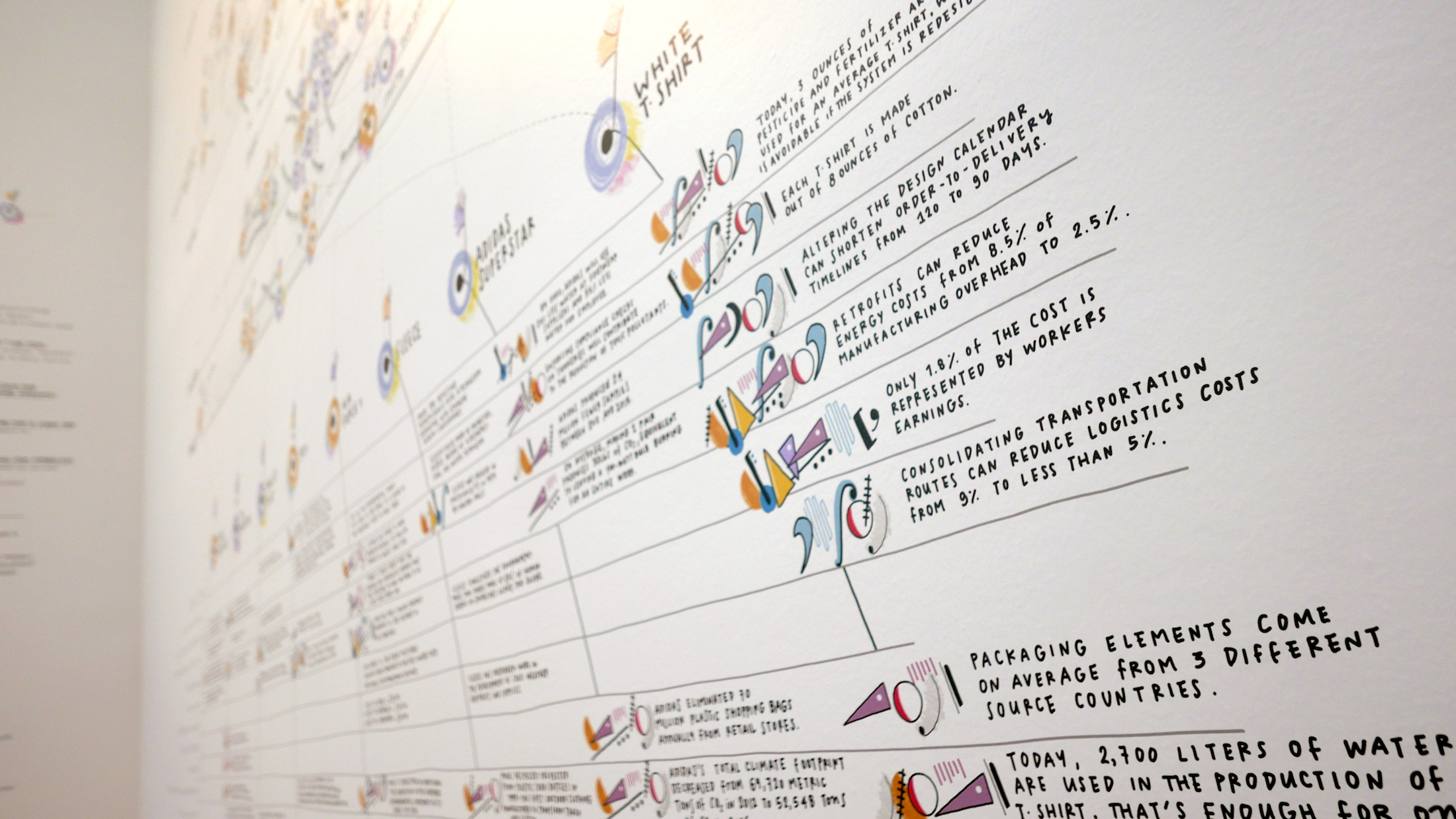
Close–up of the Capstone view, showing annotations that provide context for symbology.
Results
With Data Items: A Fashion Landscape, we aimed to provide an alternative way of looking at the exhibition's 111 objects. While the Items spanned time periods and continents, our mural showed how they could be thought of as part of a complex—yet unified—ecosystem: a step towards alignment in tackling the global issue of sustainability. Positioned near the exit of the exhibition, Data Items also served to leave visitors with an impression that reinforced the mission of the show: that object–oriented analysis could be done meaningfully, and with respect to the idiosyncratic nature of each piece.
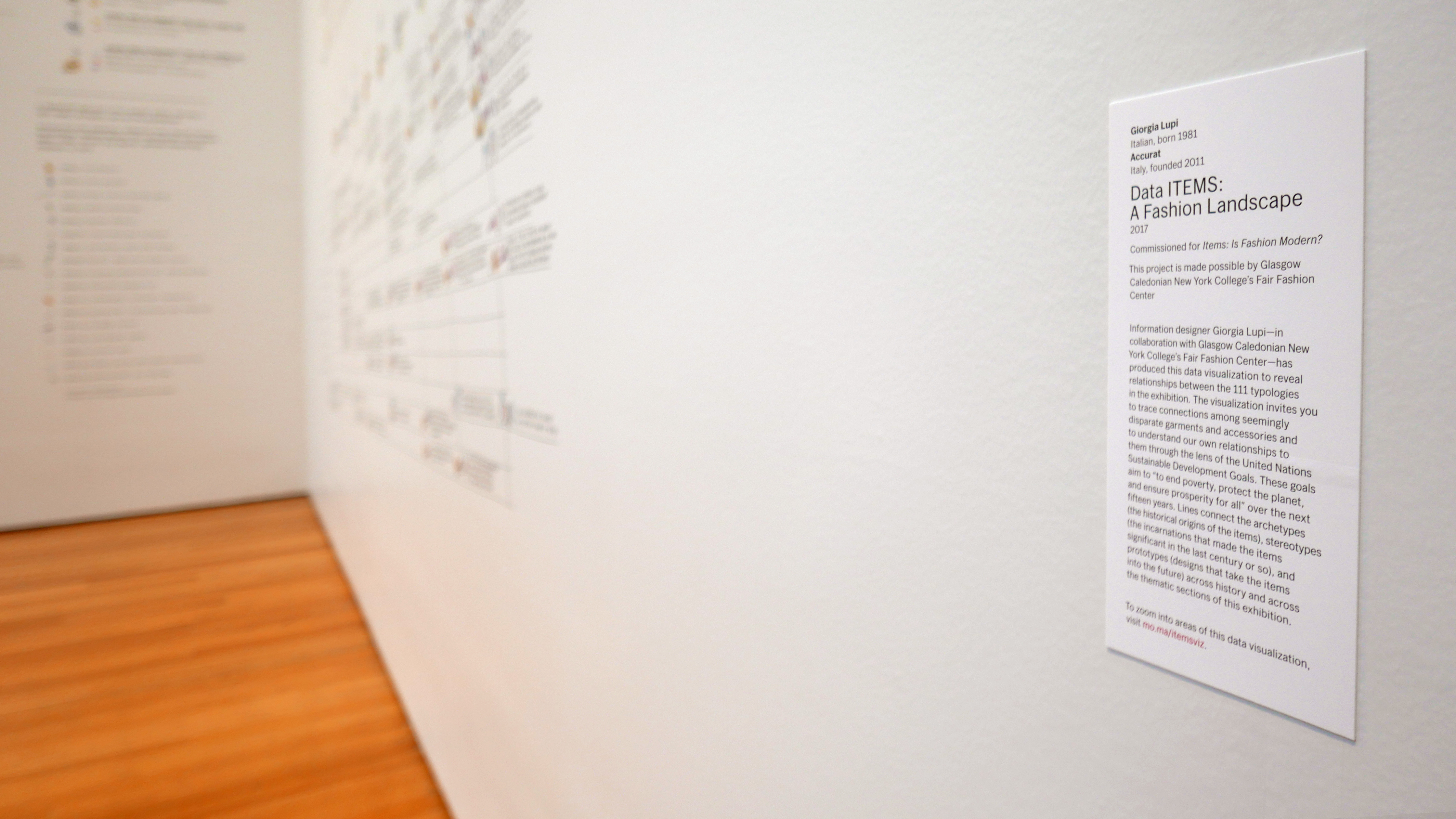
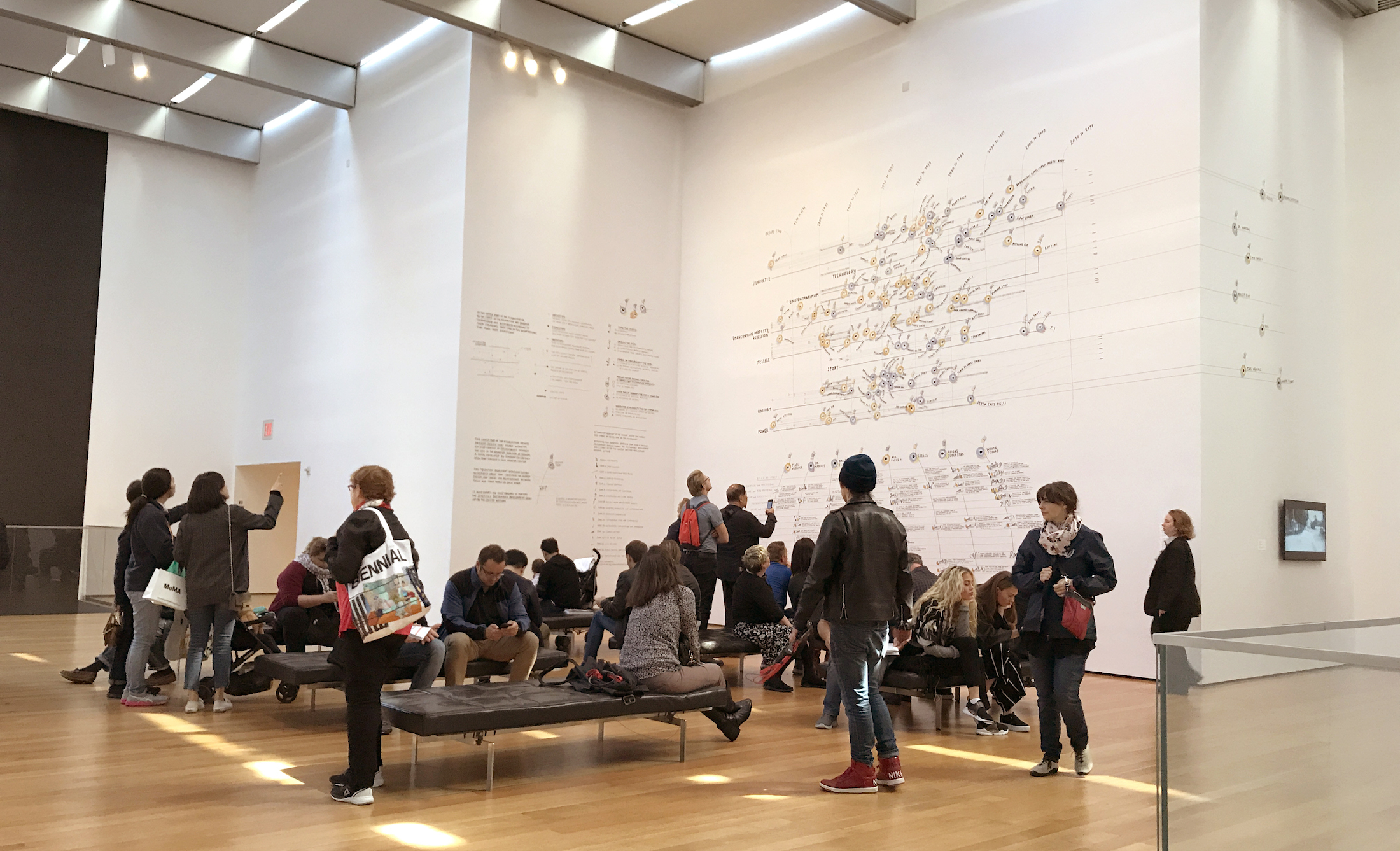
Team
Giorgia Lupi
Gabriele Rossi
Services
Dataviz
Consulting
Guidelines
Branding
Dataviz, Experience, WebApp, and Mobile App Design
Interactive, Dataviz, Mapping, Social Innovation, Caregiving, and Healthcare